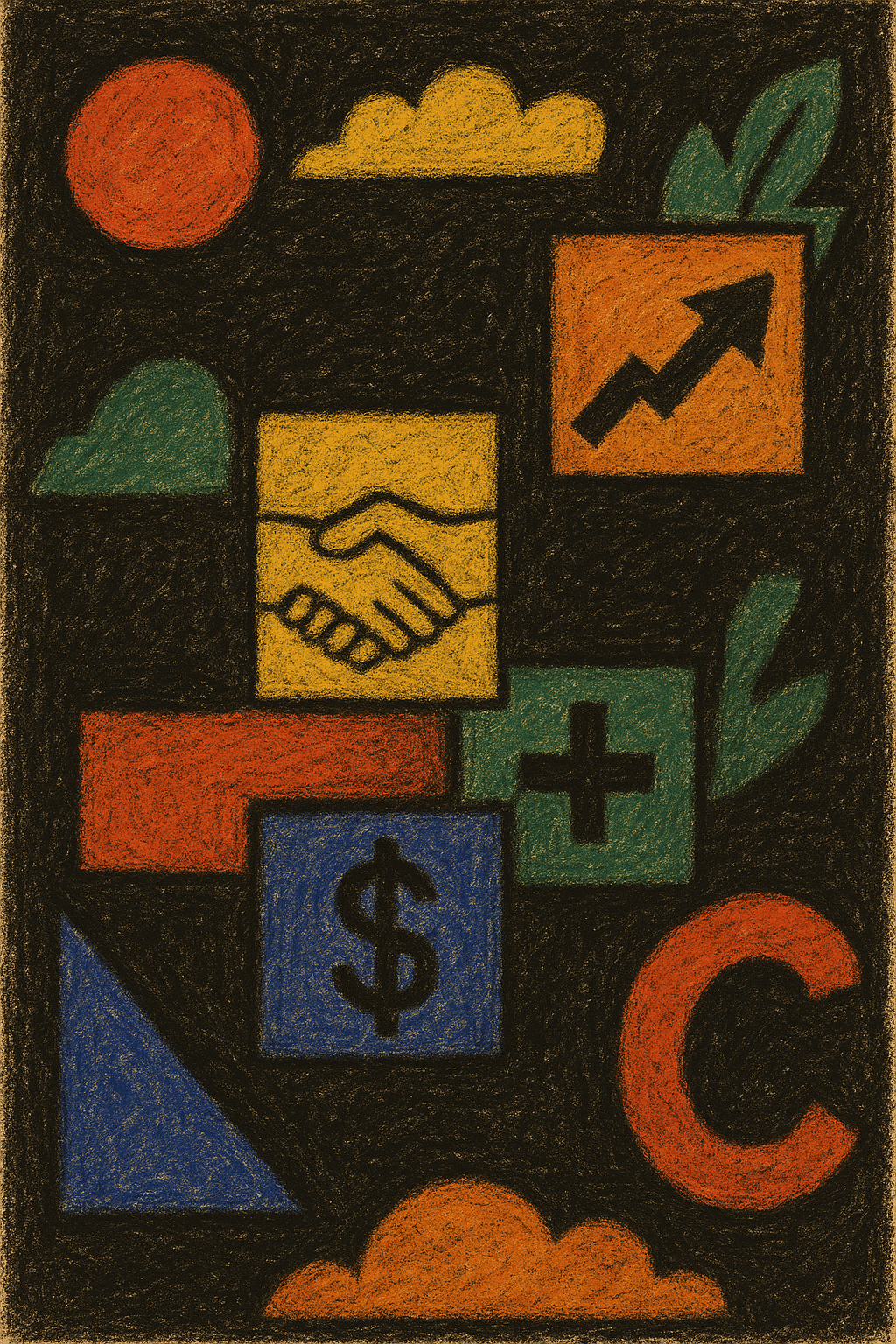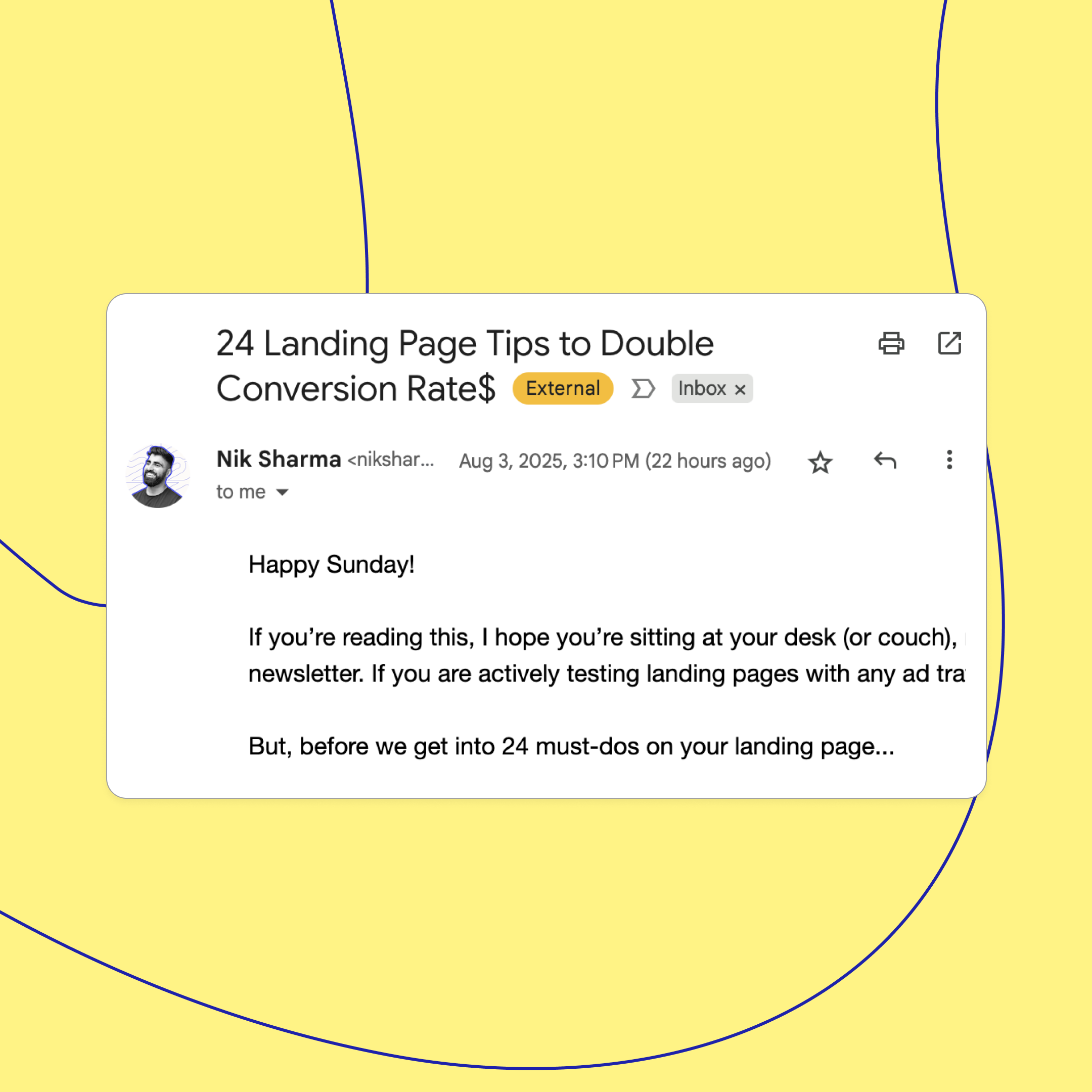Introduction: Rebalancing the Scales
A reckless concept that’s become absolutely mainstream in digital marketing today is the practice of paying influencers for upfront posts without a clear strategy on how that's going to turn into attributed sales (And I know any creator watching this is probably thinking, Whoa, whoa, whoa, slow roll here). However, the reality is this is kind of a problem that needs to be resolved for creator marketing just to remain sustainable as is, for both sides of the aisle, from brands to creators, and the agencies they work with.
Obviously, both parties want to grow together, and the best way for it to workout that way is for a sustainable and equitable arrangement to show its head in the long-run. Now, any performance marketer is going to desire something a little bit more affiliate and commission base. That's ideal on the brand side as you are simply only paying for sales, after they happen. I think that's a sustainable future that we can work towards, but don’t expect conformity to this model to occur across influencers overnight. Understandably, most influencers still seek out opportunities that pay them upfront to create/post content, with no direct dependency on sales generated.
So for brands to get more creator buy-in on performance based concepts in the future, there really needs to be a compensation model in the middle that we can take one step closer towards. For this, we can take a look at Uber as a source of inspiration, and how they used performance bonuses to accumulate their over 6 million drivers today.
A Case Study: Uber
See, there's a lot of commonalities between the way Uber needs to form relationships with drivers, and the way that brands need to form relationships with creators. The first one being that they both have this inherent challenge of trying to form B2B relationships at a B2C scale, which can be a challenge when there's truly so many people you need to hold a relationship with and communicate with in these programs.
Operating a B2B partnership at a B2C scale puts more pressure on building autonomous programs that can express what the roles & responsibility are going to be – what the compensation model is going to be, and ultimately what that relationship is going to feel like. All three of these questions are table stakes for any partnership, whether it be an influencer or driver. This is even more critical when there’s a lack of ‘human’ partnership management taking place between the partners.
Both Uber and DTC brands need to deal with this inherent messaging and relationship building challenge.
The second situation that Uber and DTC brands share is that both drivers and influencers need to adapt their crafts to meet the needs of the partnerships. New drivers already know how to drive a car, and influencers already know how to create content and build a social presence. But what both have in common is they need to adapt their craft a bit to meet the objectives of working together.
For drivers, that means elevating their game so that they can give passengers a more enjoyable riding experience. For creators/influencers, this means elevating the way they produce branded content so that it actually drives sales for the sponsoring and partnering brand.
Now, Uber is obviously a very large company. They had a lot of strategies to get to where they are today. So this article is not to say it's all due to the driver bonus, but the driver bonus has played a huge role in allowing them to compete with the taxi industry (the equivalent to the paid upfront concept of influencer marketing today). The concept was as simple as: if you reach a certain milestone, such as 50 rides or 100 rides in a certain timeframe, you’d receive a cash bonus, whether that be $500 or $750.
This was really great because it solved those aforementioned problems that they had to deal with, and it helped them cut through and form relationships at scale more quickly with the compensation transparency (which is a huge unlock for building attachment in a partnership). By pushing them to kind of learn on the job to get to that milestone, it actually made them better at the job as well – by trying to get to 50 rides in the first place, they were forced to become better Uber drivers. Drivers started to enjoy the job more, and learned to become more efficient, and saw how they could do this sustainably.
Applying Affiliate/Influencer Bonuses to DTC
So as for implementing influencer performance bonuses in 2024, it’s really as simple as following this example from Uber, and adapting it to your brand. This is the best step you can take to shift towards performance-centric influencer partnerships that still payout a lucrative sum of cash to top influencers.
Once again, influencers already know how to make content, that's for certain. They know how to create engagement, but they may not know how to sell and turn that engagement into a conversion. That's where eCommerce brands have typically specialized in the past. But by having that performance bonus, you can actually put that creator in a position where they are going to challenge themselves to think about solving those problems.

They're going to want to reach that milestone, and so they're going to start adding those subtle call-to-actions in their pitches. They're going to make those brand links a little bit more apparent. They're going to be a little bit more descriptive on the specifications of the product. All the small things that you typically can miss out on with past paid upfront engagement posts, instead become a mutual focus point with a bonus in play.
Constructing a Bonus Compensation Plan
So with that said, let's just take a quick look at what it would take to construct this model, and how to place your bonus amount. The best place to start is to think about what your client lifetime value (CLTV) is today for. Many brands will look at CLTV very differently, but for the sake of discussing it, let’s think of it as the revenue value of a customer over 12 months, minus the immediate customer acquisition costs such as the initial influencer commission payout.
Let’s say your typical CLTV is about $200. Now, let's also consider your CLTV after you subtract additional costs like COGS and other relevant overhead that you want to include. After this, let’s say your CLTV minus these costs is $100 per customer.
Now, let’s consider what a reasonable milestone threshold is for a bonus. This decision needs to come from within depending on your typical AOV and understanding of the product. However, it should land in the sweet spot of something that is attainable yet very exciting to see whenever it’s achieved. If influencers are not seeing other influencers reach it, it will have a negative impact on your influencer activation rate and you’ll lose momentum for virality. For this example, let’s say the threshold is 5 sales.
5 sales times like your net CLTV in this case is going to be $500. In this case, $500 would be your maximum bonus to even consider, and a figure to work backwards from to what you are comfortable with. That's the best place to establish your starting mental model. From there, you can break out the spreadsheets and go pretty deep looking at other ways to spend that.
Another way you could spin the bonus is to go to an extreme. Let's say, for example, you wanted to offer a substantial bonus. Maybe you want to throw out $5,000 if somebody reaches a substantial milestone, like maybe 100 orders. It may be lucrative to throw out an attractive, possibly life changing bonus in this case. When it’s hit, it may not even be immediately profitable for the brand, but it will be profitable if you zoom out and consider the other influencers who attempted to reach this bonus but didn’t finish.
You can also look at bringing the bonus to the other side of the scale, and pursue lower milestones. Maybe participants get paid on their second sale, kind of like a retention bonus. This could be an extra $10-$25 on their second sale. Remember, the goal is to teach them how to convert, and make it worthwhile.
Conclusion
At the end of the day, these are just a few examples of how you can spin bonuses to create loyalty, and a viable influencer-base that can deliver on performance. If you’re reading this and looking for additional strategies on how to fit bonuses into your landscape, that’s where tools like Social Snowball and CreatorCommerce can help out. If you’re looking for someone to chat about bonus structures with, feel free to grab some time with us here. I’d be happy to show how you can leverage both tools to make a remarkable influencer program, with all the right incentives baked in.




.png)





%201.png)
%201.png)
